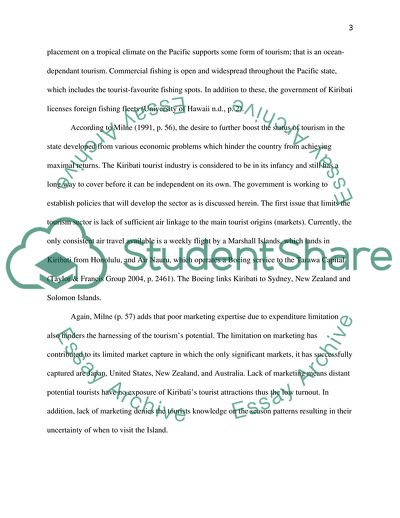Cite this document
(Relationship between Tourism Policy and Development in Kiribati Case Study Example | Topics and Well Written Essays - 1750 words, n.d.)
Relationship between Tourism Policy and Development in Kiribati Case Study Example | Topics and Well Written Essays - 1750 words. https://studentshare.org/tourism/1816577-critical-analysis-of-the-relationship-between-tourism-policy-and-development-in-kiribati
Relationship between Tourism Policy and Development in Kiribati Case Study Example | Topics and Well Written Essays - 1750 words. https://studentshare.org/tourism/1816577-critical-analysis-of-the-relationship-between-tourism-policy-and-development-in-kiribati
(Relationship Between Tourism Policy and Development in Kiribati Case Study Example | Topics and Well Written Essays - 1750 Words)
Relationship Between Tourism Policy and Development in Kiribati Case Study Example | Topics and Well Written Essays - 1750 Words. https://studentshare.org/tourism/1816577-critical-analysis-of-the-relationship-between-tourism-policy-and-development-in-kiribati.
Relationship Between Tourism Policy and Development in Kiribati Case Study Example | Topics and Well Written Essays - 1750 Words. https://studentshare.org/tourism/1816577-critical-analysis-of-the-relationship-between-tourism-policy-and-development-in-kiribati.
“Relationship Between Tourism Policy and Development in Kiribati Case Study Example | Topics and Well Written Essays - 1750 Words”. https://studentshare.org/tourism/1816577-critical-analysis-of-the-relationship-between-tourism-policy-and-development-in-kiribati.


